Air pollution has become one of the most pressing environmental concerns of our time. With rapid industrialization, increased vehicular emissions, and urban expansion, the air quality in many cities worldwide has drastically deteriorated. According to the World Health Organization (WHO), nearly 99% of the world’s population breathes air that exceeds safe pollution limits. While governments are working on large-scale solutions, individuals can take small but impactful steps to improve their immediate environment. One of the most effective and natural solutions lies in cultivating plants that purify the air.
These plants not only absorb harmful toxins but also increase oxygen levels, reduce stress, and create a refreshing ambiance indoors. This article explores the best plants that can purify air in polluted cities, backed by scientific evidence and practical growing tips.
Why Plants Are Effective Air Purifiers
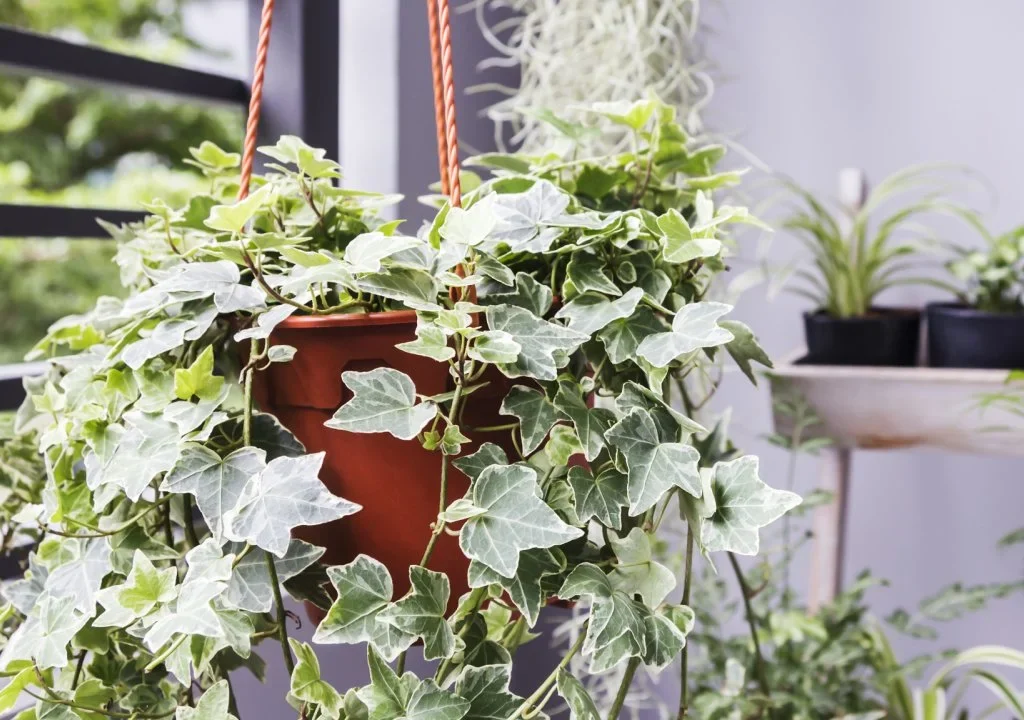
Plants naturally filter the air through a process called phytoremediation, where they absorb pollutants through their leaves and roots. In the 1989 NASA Clean Air Study, researchers discovered that certain indoor plants could remove toxins such as benzene, formaldehyde, xylene, ammonia, and trichloroethylene, which are commonly found in polluted urban air.
The benefits of air-purifying plants include:
- Reducing harmful pollutants such as volatile organic compounds (VOCs).
- Boosting oxygen levels by releasing fresh oxygen during photosynthesis.
- Balancing humidity through transpiration, which can help in dry, polluted environments.
- Enhancing psychological well-being, lowering stress caused by urban pollution.
Top Plants That Can Purify Air in Polluted Cities
1. Areca Palm (Dypsis lutescens)
The Areca Palm, also known as the “butterfly palm,” is one of the best natural humidifiers and air purifiers. It is particularly effective in removing xylene and toluene from the air, both of which are common in polluted city environments.
- Air-Purifying Benefits: Absorbs toxins and maintains moisture levels in dry, polluted air.
- Growth Requirements: Thrives in bright, indirect sunlight and needs regular watering.
- Special Advantage: Releases large amounts of oxygen, making it ideal for living rooms and offices.
2. Snake Plant (Sansevieria trifasciata)
Popularly known as “Mother-in-law’s Tongue,” the Snake Plant is one of the toughest and most resilient air-purifying plants. Unlike most plants, it releases oxygen at night, making it highly beneficial in polluted city bedrooms.
- Air-Purifying Benefits: Removes formaldehyde, nitrogen oxides, and benzene.
- Growth Requirements: Extremely low maintenance; tolerates low light and minimal watering.
- Special Advantage: Acts as a natural oxygen booster indoors, even in poorly ventilated areas.
3. Aloe Vera (Aloe barbadensis miller)
Famous for its medicinal and skincare properties, Aloe Vera is also an excellent air purifier. It helps eliminate formaldehyde and benzene, which are common byproducts of urban pollution and household chemicals.
- Air-Purifying Benefits: Absorbs pollutants and boosts indoor oxygen levels.
- Growth Requirements: Prefers bright, indirect sunlight and minimal watering.
- Special Advantage: Dual-purpose plant—cleans air and provides soothing gel for burns, cuts, and skin care.
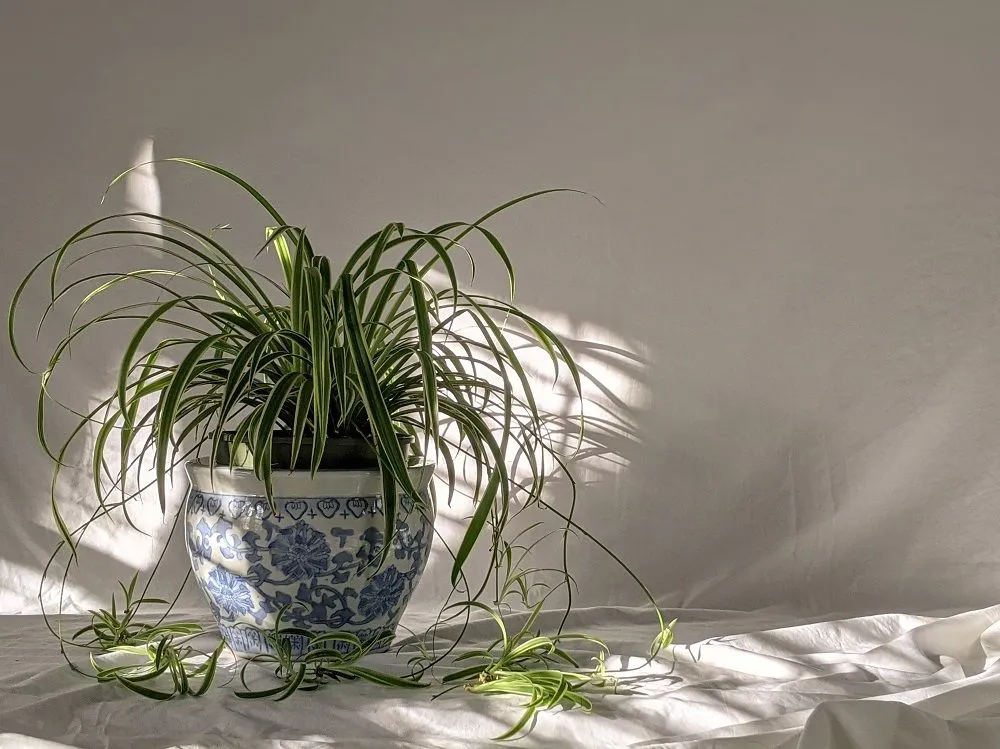
4. Peace Lily (Spathiphyllum wallisii)
Peace Lilies are elegant plants that bloom beautiful white flowers and are excellent for filtering air. They are known to absorb toxins like ammonia, formaldehyde, and benzene, making them perfect for polluted indoor settings.
- Air-Purifying Benefits: Neutralizes harmful indoor chemicals effectively.
- Growth Requirements: Prefers low to moderate light and weekly watering.
- Special Advantage: Enhances indoor aesthetics while keeping the air fresh and clean.
5. Spider Plant (Chlorophytum comosum)
Spider Plants are among the easiest indoor plants to grow and are highly effective in cleansing polluted air. They are particularly effective against carbon monoxide, a common pollutant in city traffic areas.
- Air-Purifying Benefits: Removes carbon monoxide, benzene, and formaldehyde.
- Growth Requirements: Grows well in indirect sunlight and tolerates neglect.
- Special Advantage: Non-toxic to pets and spreads quickly, making it perfect for urban households.
6. Rubber Plant (Ficus elastica)
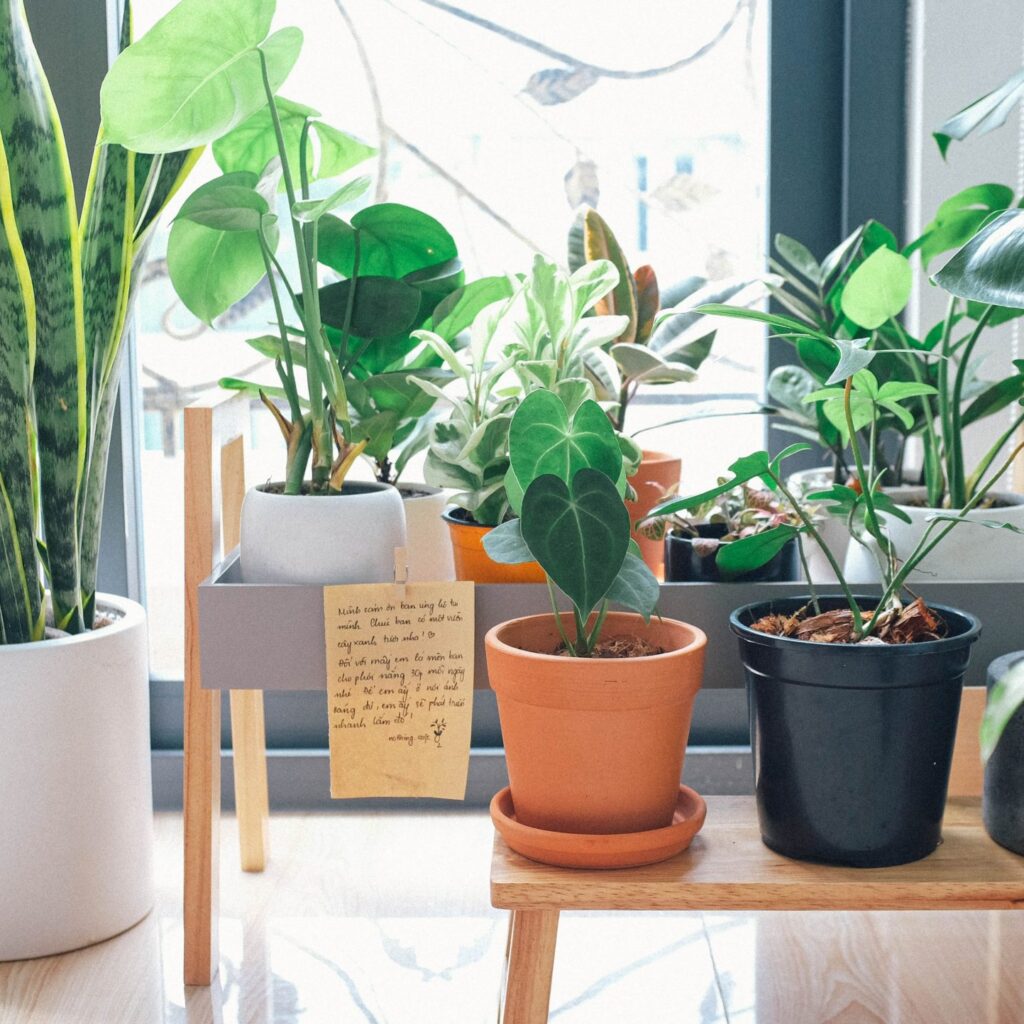
The Rubber Plant is known for its glossy leaves and air-cleaning ability. It is highly effective in removing toxins such as formaldehyde, a common pollutant found in vehicle emissions and building materials.
- Air-Purifying Benefits: Absorbs toxins and enhances oxygen production.
- Growth Requirements: Prefers bright light but can tolerate low light; requires occasional watering.
- Special Advantage: Grows into a tall, indoor tree, adding greenery to city apartments.
7. Bamboo Palm (Chamaedorea seifrizii)
Also called the “Reed Palm,” this plant acts as a natural humidifier and air purifier. It is known to remove formaldehyde and benzene, both of which are prominent in polluted city atmospheres.
- Air-Purifying Benefits: Filters airborne toxins and improves indoor humidity.
- Growth Requirements: Prefers shaded areas with indirect light and moist soil.
- Special Advantage: Adds a tropical feel to indoor spaces while cleaning the air.
8. Boston Fern (Nephrolepis exaltata)
Boston Ferns are lush plants with feathery leaves that are not only visually appealing but also excellent at filtering air. They are effective in absorbing formaldehyde and xylene from polluted environments.
- Air-Purifying Benefits: Acts as a natural dehumidifier and toxin absorber.
- Growth Requirements: Needs consistent moisture and indirect sunlight.
- Special Advantage: Excellent choice for hanging baskets in polluted apartments.
9. Tulsi (Holy Basil – Ocimum tenuiflorum)
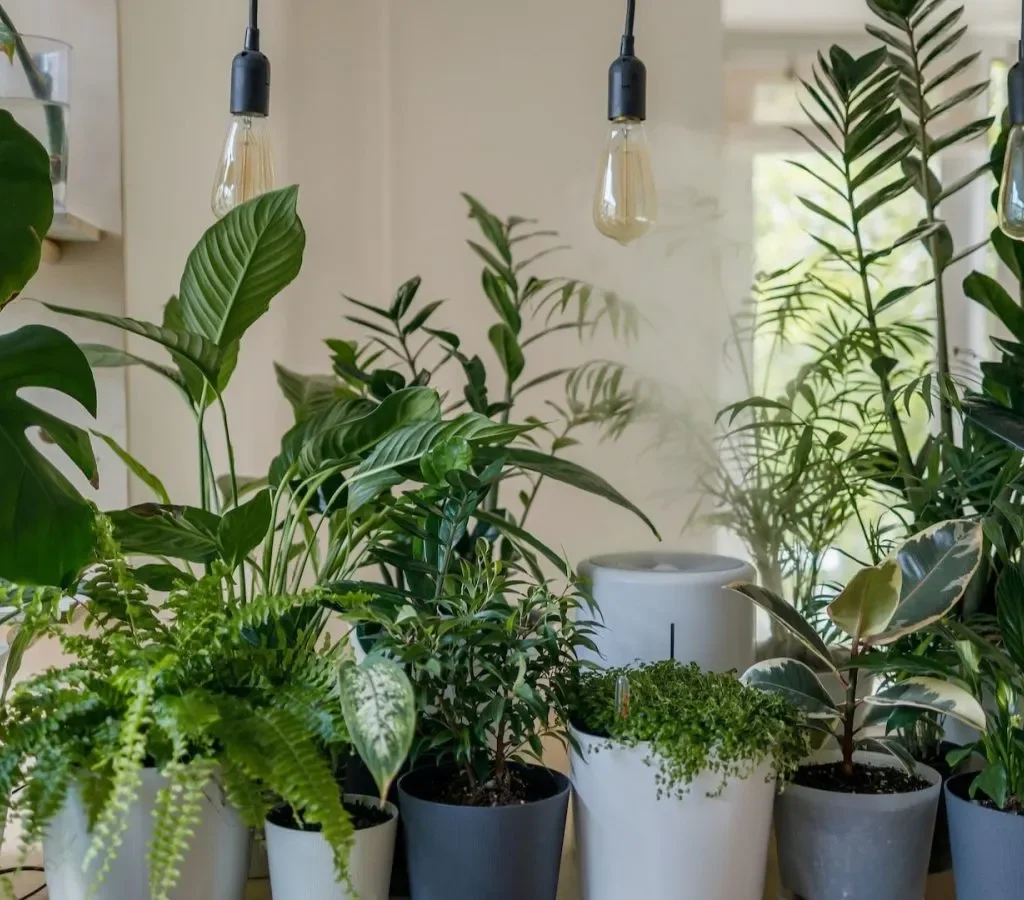
Tulsi, also known as Holy Basil, holds immense cultural and medicinal importance in many countries, particularly India. It is also a powerful air purifier and oxygen booster.
- Air-Purifying Benefits: Neutralizes harmful gases like carbon dioxide and sulfur dioxide.
- Growth Requirements: Prefers direct sunlight and regular watering.
- Special Advantage: Releases oxygen 24/7 and can be used for herbal remedies, making it a perfect plant for polluted cities.
10. Money Plant (Epipremnum aureum)
Also known as Devil’s Ivy, the Money Plant is not only associated with prosperity but also has powerful air-purifying qualities.
- Air-Purifying Benefits: Removes formaldehyde, xylene, benzene, and toluene.
- Growth Requirements: Can thrive in both soil and water with minimal care.
- Special Advantage: Aesthetic appeal and ability to grow as a climber or hanging plant.
Tips for Growing Air-Purifying Plants in Polluted Cities

- Place Plants Strategically – Keep them near windows, doors, and balconies to maximize air purification.
- Choose Low-Maintenance Species – Since city dwellers often have busy schedules, hardy plants like Snake Plant, Spider Plant, and Aloe Vera are ideal.
- Mix Varieties – Combining broad-leafed plants like Rubber Plant with oxygen-boosting species like Snake Plant increases effectiveness.
- Avoid Overcrowding – Too many plants in one space may increase humidity levels, leading to mold growth.
- Regular Care – Clean leaves regularly, provide proper watering, and ensure adequate sunlight.
Conclusion
In a world where air pollution has become an inevitable part of urban living, plants serve as nature’s silent warriors, fighting toxins and refreshing our environment. From the oxygen-rich Snake Plant and Tulsi to toxin-absorbing champions like the Peace Lily and Spider Plant, each of these species plays a vital role in making polluted city air more breathable.
By integrating these plants into homes, offices, and urban landscapes, we not only improve air quality but also enhance mental well-being, aesthetics, and overall quality of life. In the battle against pollution, the simple act of growing plants can be a powerful step toward a healthier, greener future.
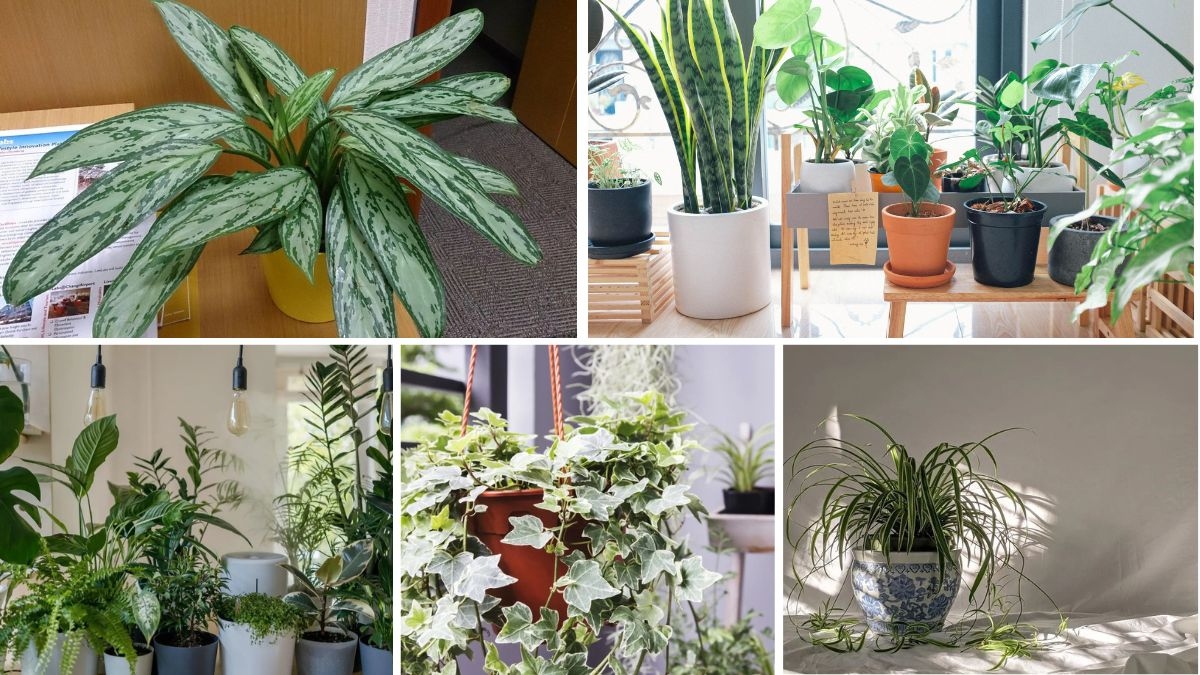





Leave A Comment